
ROAS Dashboard template
The ROAS Dashboard Template is designed for marketers managing PPC campaigns across multiple platforms. This template provides a centralized view of your Return on Ad Spend (ROAS) metrics, allowing for data-driven decision-making.
Track and analyze performance from various advertising channels, including:
- Google Ads
- LinkedIn Ads
- Facebook Ads
- TikTok Ads
- Twitter Ads
Utilize this dashboard to monitor campaign performance, compare ROAS across platforms, and optimize your advertising strategy. The template integrates seamlessly with data sources, providing real-time insights into your advertising spend and revenue generation.
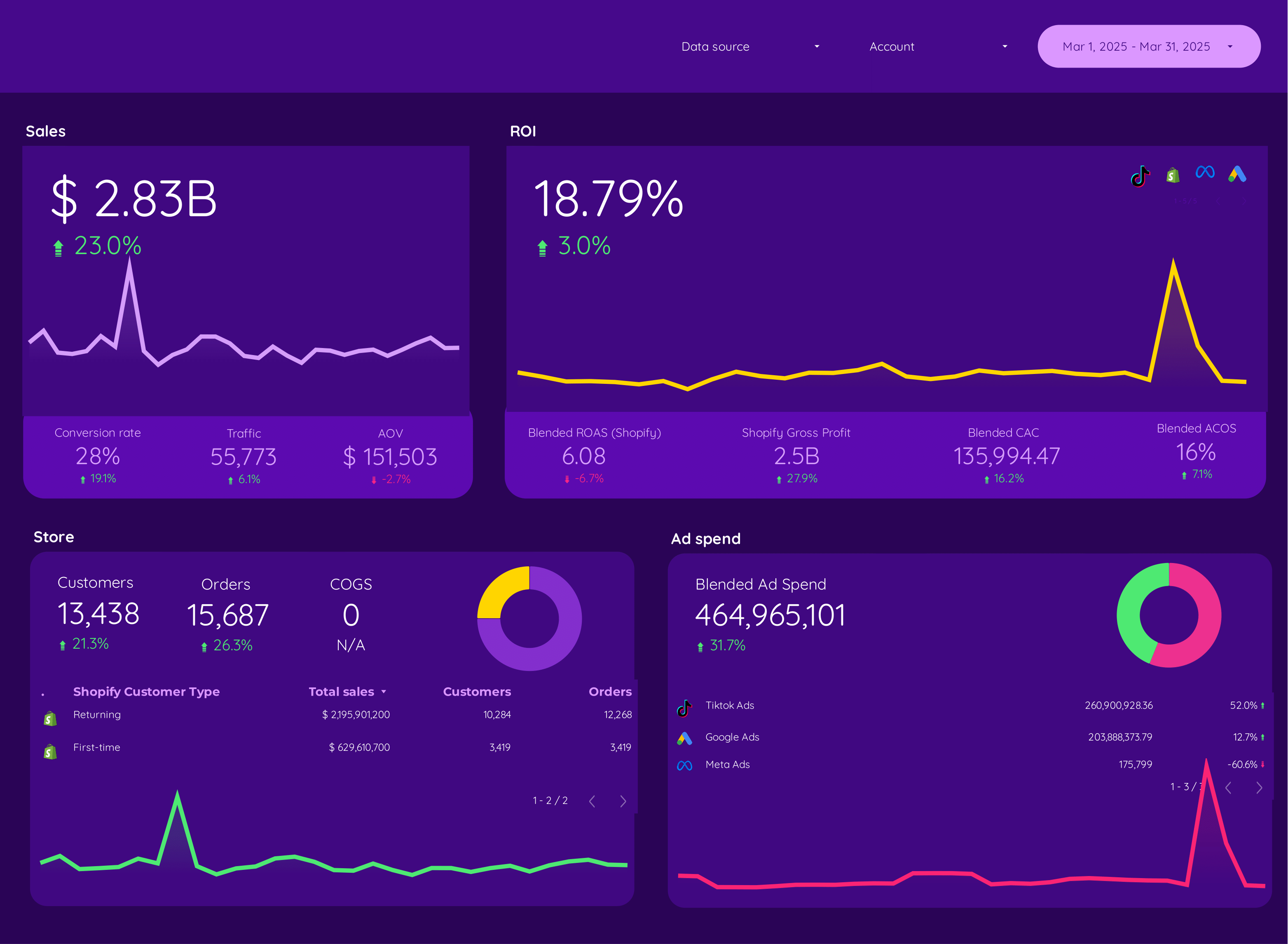
E-commerce Dashboard template
The E-commerce Dashboard Template is designed to provide a centralized view of your online business performance. It integrates data from multiple platforms to offer a holistic view of your marketing and sales efforts.
With this dashboard, you can track and analyze data from:
- Google Analytics 4 for website traffic and user behavior insights.
- Shopify for sales and product performance metrics.
- Facebook Ads and Instagram Insights for social media advertising performance.
- Google Ads for search engine marketing analytics.
- Klaviyo for email marketing campaign results.
- TikTok Ads for video marketing effectiveness.
This template allows you to monitor PPC campaigns and assess the impact of your advertising spend across different channels. By consolidating data from Facebook Insights and other platforms, you can make informed decisions to optimize your marketing strategies.
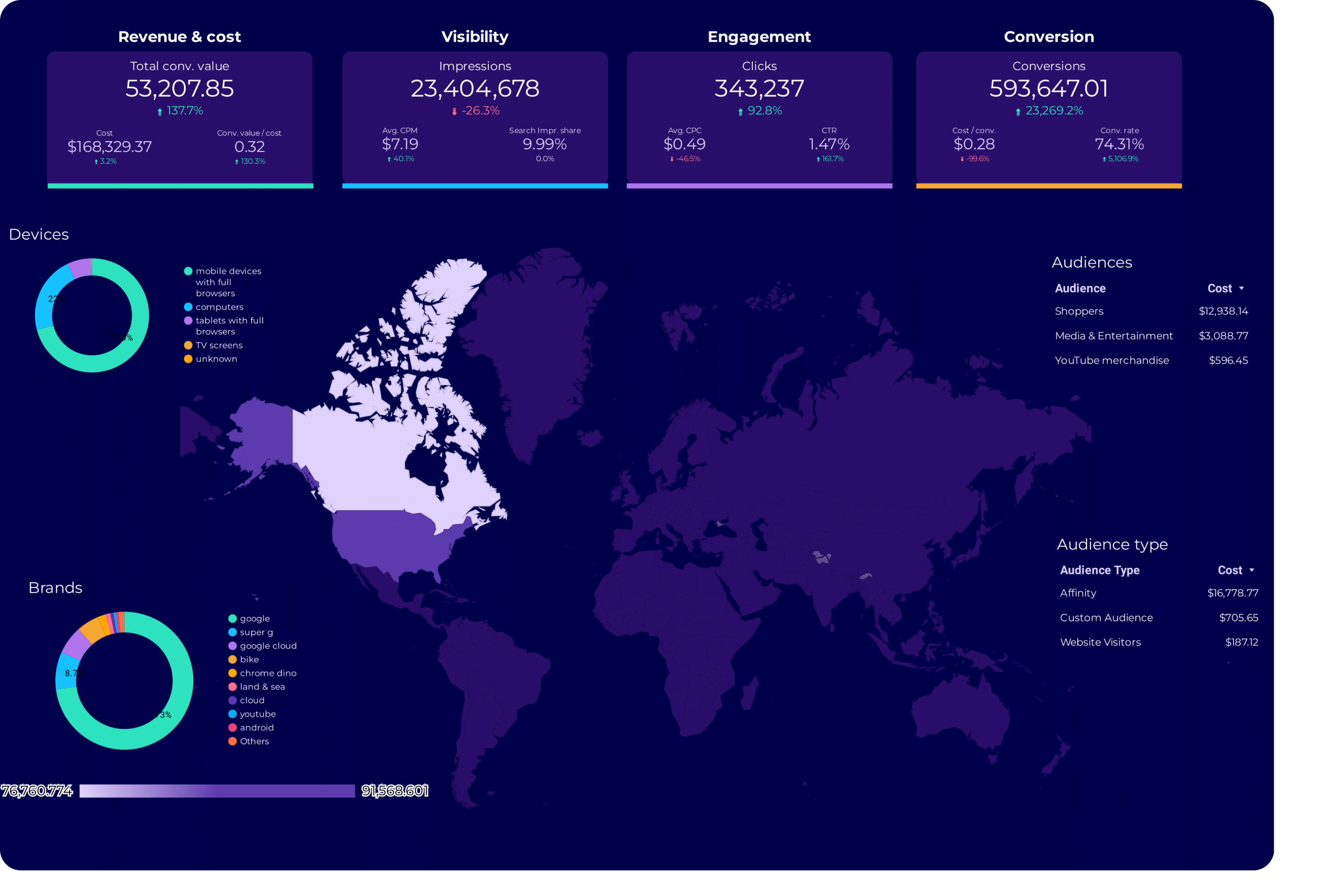
Google Ads Audience Dashboard template
The Google Ads Audience Dashboard template is designed for PPC professionals seeking to optimize their advertising strategies. This dashboard provides a detailed view of audience performance metrics, enabling data-driven decisions.
With this template, users can:
- Analyze audience demographics and behavior patterns.
- Track conversion rates across different audience segments.
- Monitor ad spend and ROI for targeted groups.
Utilize this dashboard to align your campaigns with audience insights, ensuring your Google Ads efforts are precisely targeted and measurable.
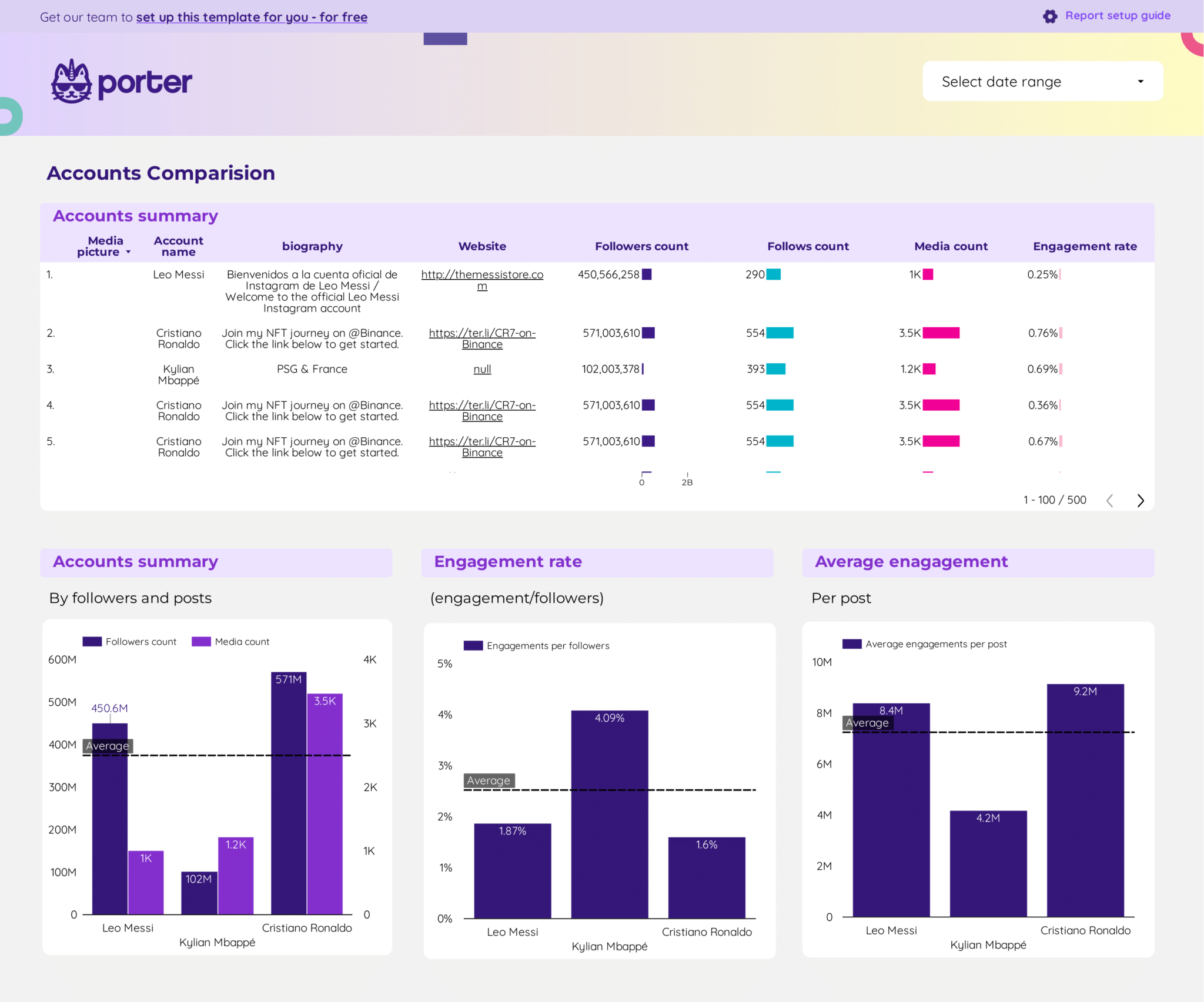
Instagram Insights competitors Dashboard template
Introducing the Instagram Insights Competitors Dashboard Template, a powerful tool designed for social media analysts and marketers. This template provides a structured approach to monitor and analyze public Instagram data, offering valuable insights into your competitors’ performance.
With this dashboard, you can:
- Track Competitor Engagement: Monitor likes, comments, and shares to understand audience interaction.
- Analyze Content Strategy: Evaluate the types of content that drive engagement and identify trends.
- Compare Growth Metrics: Assess follower growth rates and engagement ratios to gauge market position.
Utilize this template to streamline your social media strategy by leveraging Instagram public data effectively. Stay informed and make data-driven decisions with ease.
PPC budget tracking and pacing Dashboard template
The PPC Budget Tracking and Pacing Dashboard template is designed for managing and monitoring advertising spend across multiple platforms, including Facebook Ads, Google Ads, LinkedIn Ads, TikTok Ads, and Twitter Ads.
This dashboard provides a centralized view of your advertising budget and spend, allowing for real-time tracking and adjustments. It is structured to support the following functionalities:
- Budget Allocation: Set and adjust budgets for each platform to align with campaign goals.
- Spend Monitoring: Track daily, weekly, and monthly spend to ensure alignment with budgetary constraints.
- Pacing Analysis: Evaluate spend rates to determine if campaigns are on track to utilize the allocated budget effectively.
- Performance Metrics: Integrate key performance indicators (KPIs) to assess the impact of spend on campaign outcomes.
Utilize this dashboard to maintain control over your PPC campaigns, ensuring that your advertising spend is optimized across all platforms.
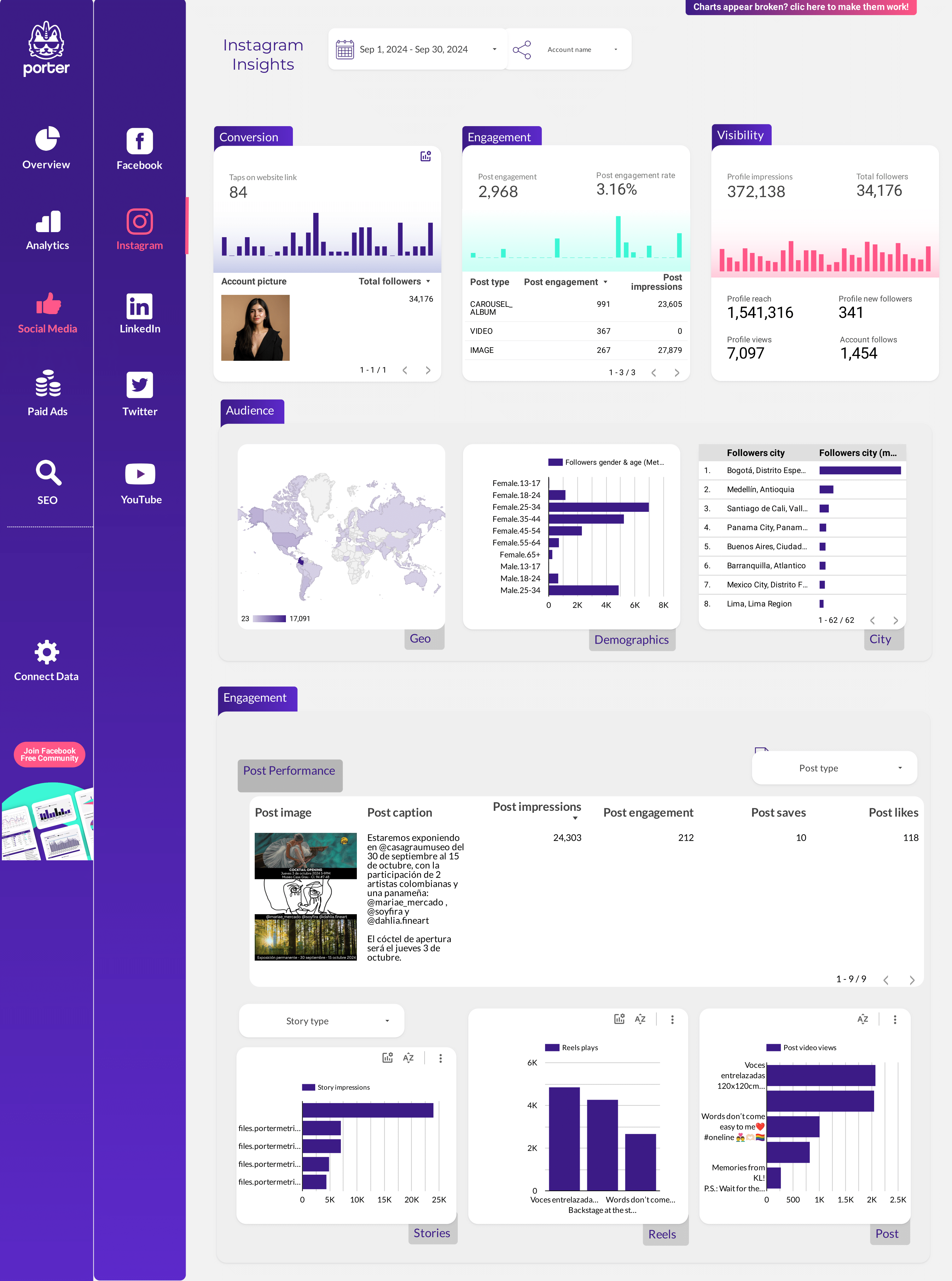
Social Media Client presentation Dashboard template
The Social Media Client Presentation Dashboard template is designed for agencies managing multiple social media platforms. It provides a structured overview of public data and insights from various social media channels.
Instagram Public Data and Instagram Insights offer detailed analytics on audience engagement and content performance. This includes metrics such as likes, comments, and follower growth.
Facebook Insights deliver data on page interactions, post reach, and demographic information, allowing for a thorough analysis of audience behavior.
For LinkedIn Pages, the dashboard presents data on post engagement, follower demographics, and page views, facilitating a deeper understanding of professional audience interactions.
Google Business Profile metrics include search visibility, customer actions, and review analytics, providing a comprehensive view of business presence on Google.
The dashboard also integrates data from Pinterest and TikTok, offering insights into pin performance, video views, and audience engagement trends.
- Track and compare performance across multiple platforms.
- Access detailed insights for strategic decision-making.
- Utilize data-driven reports for client presentations.
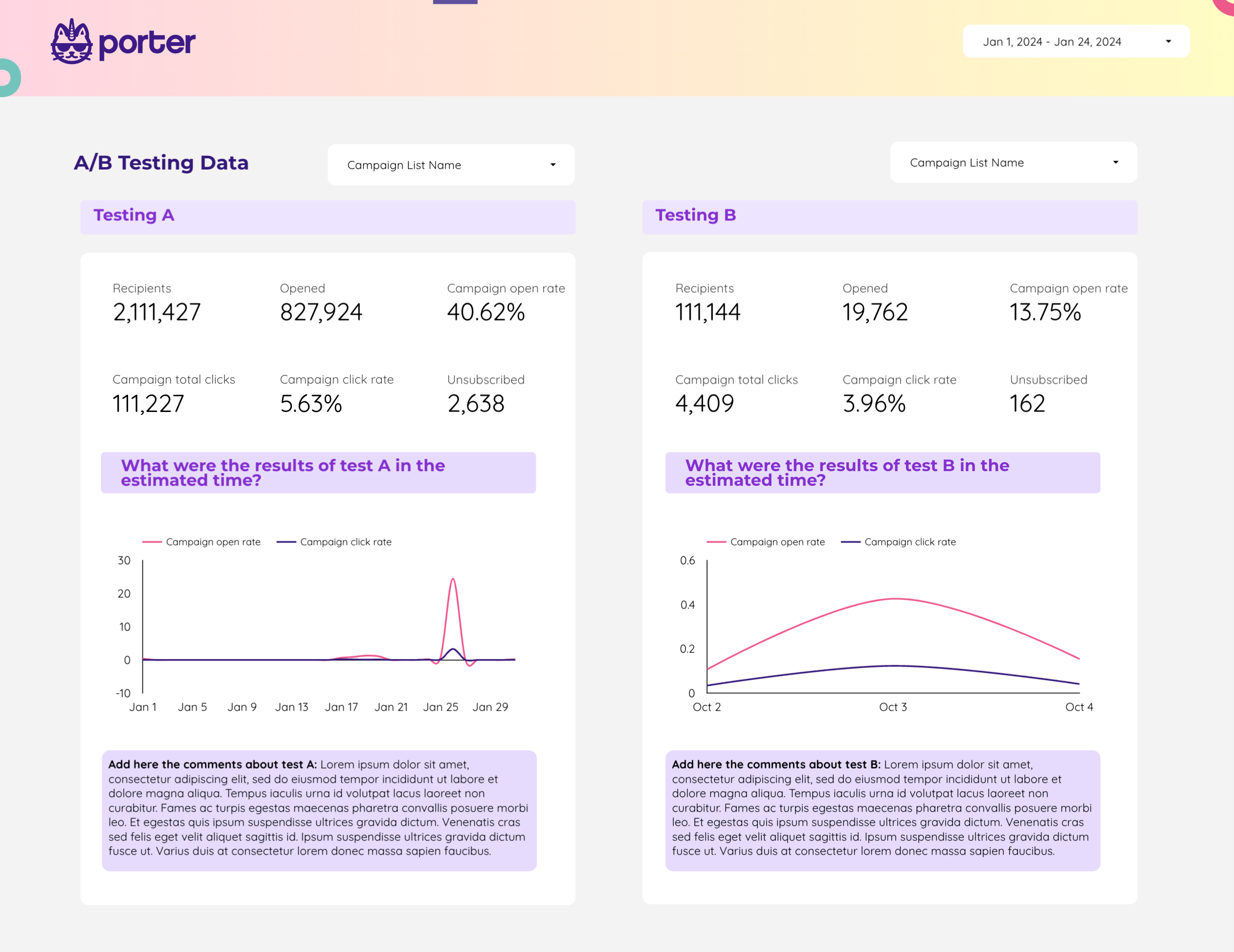
A/B testing Dashboard template
The A/B Testing Dashboard template is designed for Email Marketing professionals using Mailchimp. This tool provides a structured approach to compare different email campaign strategies.
Features include:
- Performance Metrics: Track open rates, click-through rates, and conversion rates for each variant.
- Segmentation Analysis: Evaluate how different audience segments respond to each email version.
- Visual Data Representation: Utilize graphs and charts to visualize campaign performance.
- Real-Time Updates: Monitor ongoing tests with live data feeds.
This dashboard is essential for marketers aiming to optimize their email campaigns by systematically testing and analyzing different approaches.
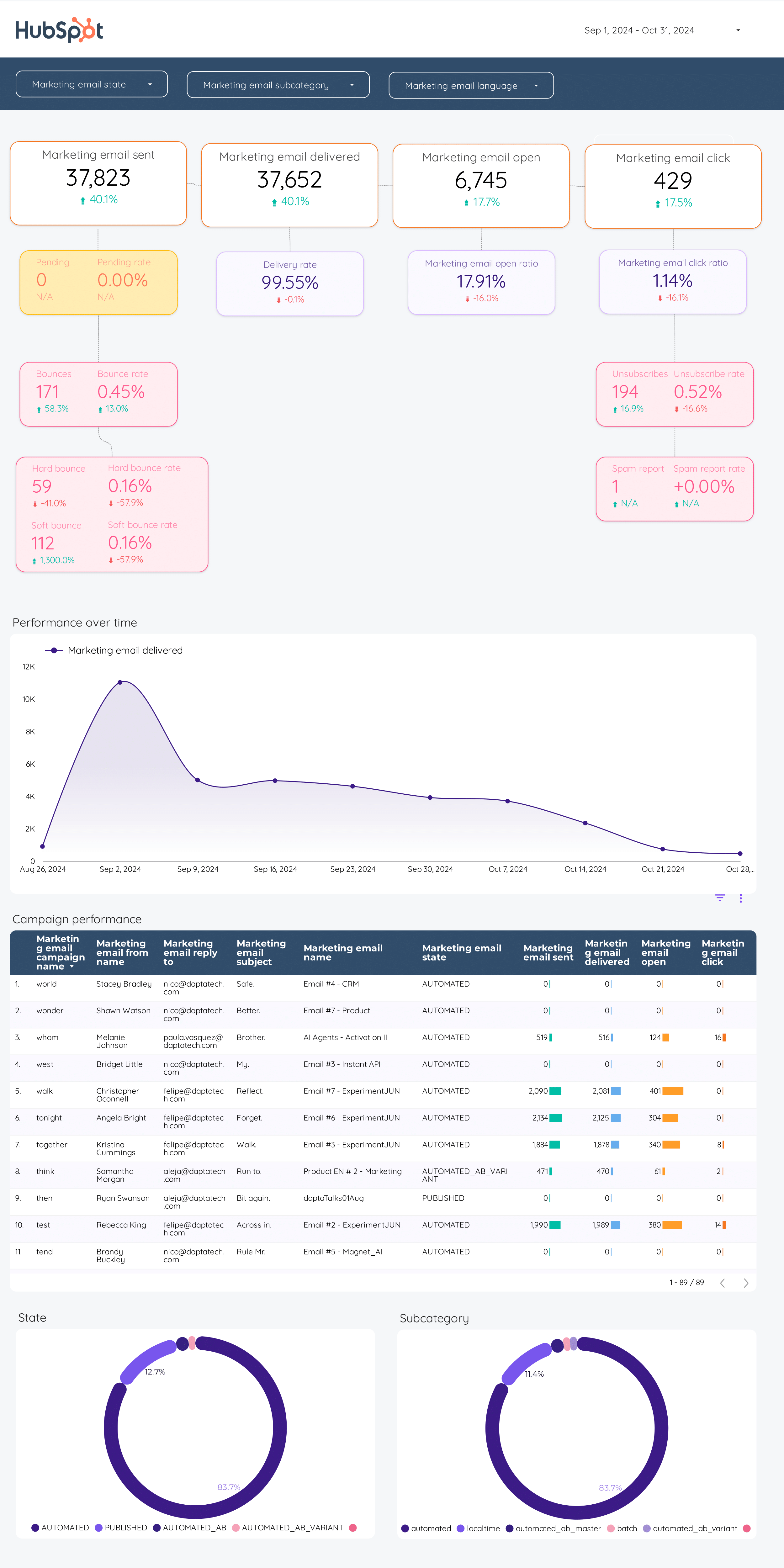
Email marketing Dashboard template
The Email Marketing Dashboard template is designed to streamline your email campaigns across platforms like Mailchimp, Klaviyo, ActiveCampaign, and HubSpot. This dashboard provides a centralized view of your email marketing performance, allowing you to track and analyze critical metrics.
With this template, you can:
- Monitor open rates, click-through rates, and conversion rates in real-time.
- Compare performance across different email platforms.
- Identify trends and patterns in subscriber engagement.
- Access detailed reports on campaign performance.
Utilize this dashboard to make data-driven decisions and optimize your email marketing strategies effectively.
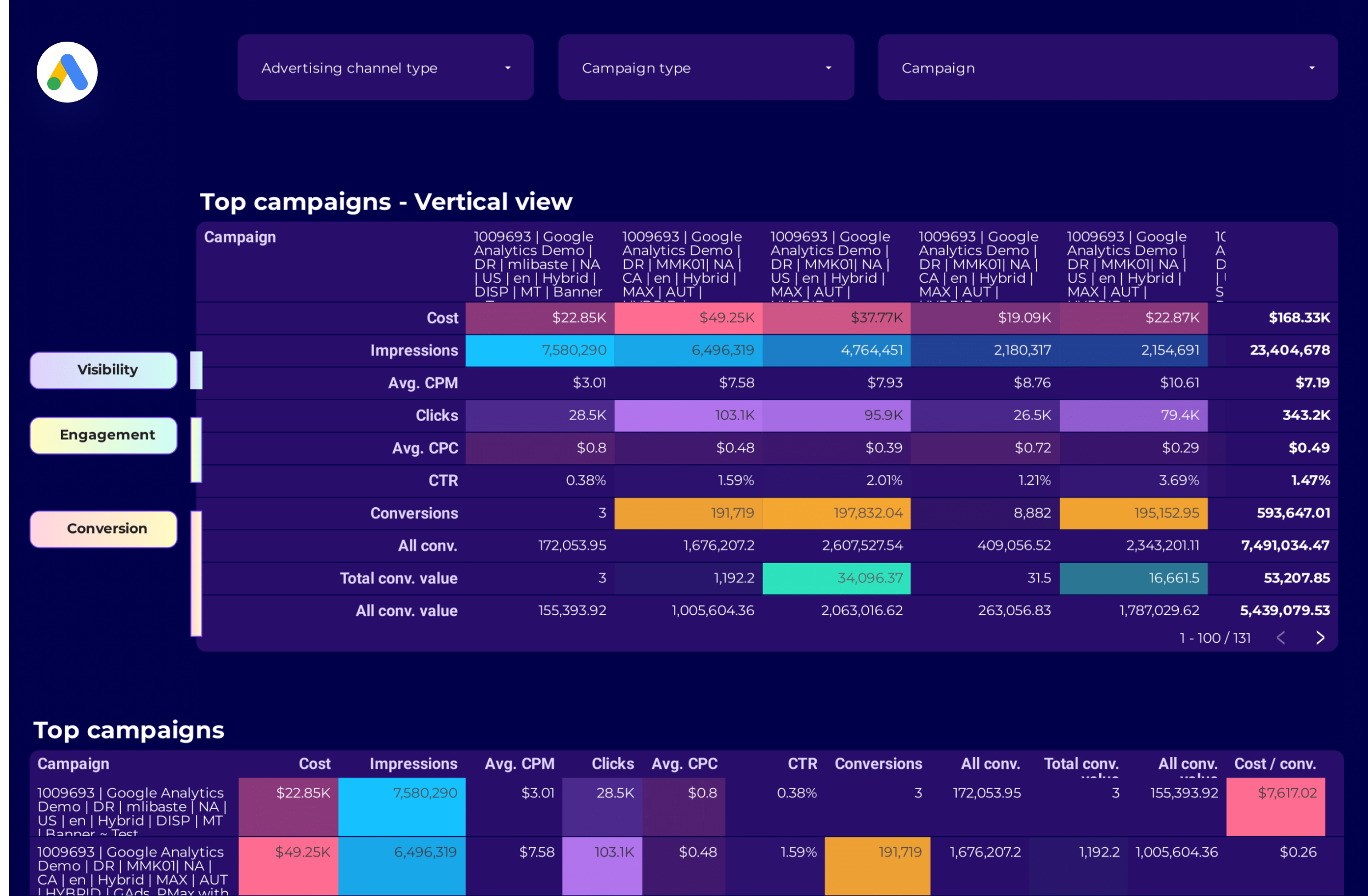
Google Ads Campaign performance Dashboard template
The Google Ads Campaign Performance Dashboard template provides a structured view of your PPC campaigns. This dashboard is designed to offer insights into various metrics that are crucial for analyzing the performance of your Google Ads campaigns.
With this dashboard, you can monitor:
- Impressions: Track how often your ads are shown.
- Clicks: Measure the number of times users click on your ads.
- Click-Through Rate (CTR): Calculate the ratio of clicks to impressions.
- Cost-Per-Click (CPC): Determine the average cost incurred for each click.
- Conversions: Analyze the number of completed actions defined as valuable.
- Conversion Rate: Assess the percentage of clicks that result in conversions.
- Cost-Per-Conversion: Evaluate the cost associated with each conversion.
This template is essential for PPC managers who need to track and report on the performance of their Google Ads campaigns. It provides a clear and concise view of the data, allowing for informed decision-making and strategic planning.
Instagram Insights Followers tracking Dashboard template
Introducing the Instagram Insights Followers Tracking Dashboard, a powerful tool designed for social media managers and marketers. This dashboard provides a detailed analysis of your Instagram followers, offering valuable insights into your audience’s behavior and growth patterns.
With this dashboard, you can:
- Monitor Follower Growth: Track daily, weekly, and monthly changes in your follower count to understand trends and patterns.
- Analyze Demographics: Gain insights into the age, gender, and location of your followers to tailor your content strategy.
- Engagement Metrics: Evaluate how your followers interact with your content, including likes, comments, and shares.
- Content Performance: Identify which posts resonate most with your audience to optimize future content.
Utilize this dashboard to make data-driven decisions and refine your Instagram strategy for better audience engagement and growth.

PPC Campaign performance Dashboard template
The PPC Campaign Performance Dashboard template provides a centralized view of your advertising efforts across multiple platforms. This dashboard is designed to track and analyze the performance of your campaigns on Facebook Ads, Google Ads, LinkedIn Ads, TikTok Ads, and Twitter Ads.
With this dashboard, you can monitor:
- Impressions and Clicks to understand audience engagement.
- Click-Through Rate (CTR) to measure the effectiveness of your ad creatives.
- Cost Per Click (CPC) and Cost Per Acquisition (CPA) for budget management.
- Conversion Rates to assess the success of your campaigns in achieving desired actions.
- Return on Ad Spend (ROAS) to evaluate the profitability of your advertising investments.
This template allows for a detailed comparison of performance metrics across different platforms, providing insights into which channels are delivering the best results.
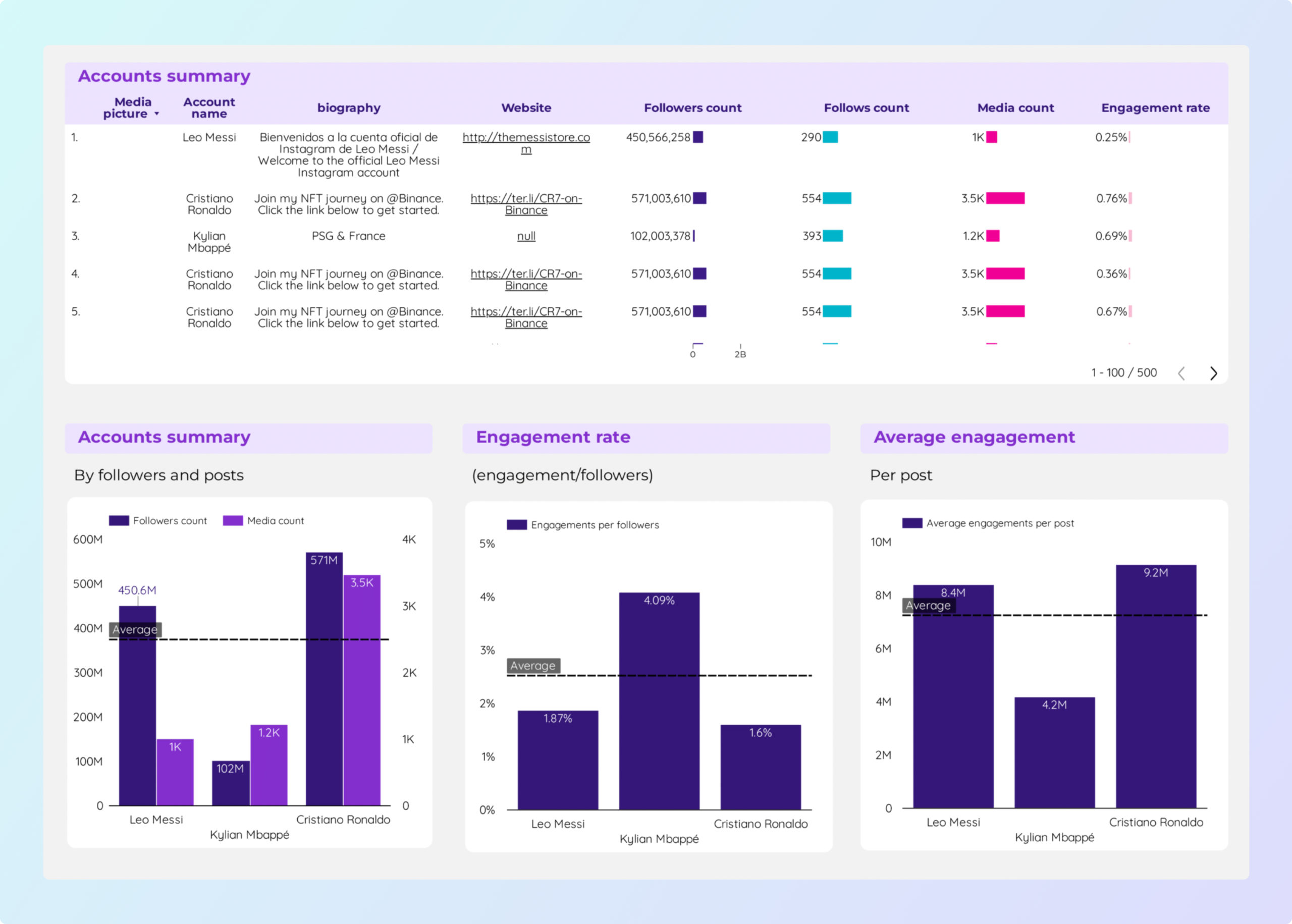
Social Media competitors Dashboard template
Introducing the Social Media Competitors Dashboard Template, a powerful tool designed for analyzing and comparing public data across multiple social media platforms. This template provides insights into your competitors’ performance on platforms such as Instagram, Facebook, LinkedIn, Google Business Profile, Pinterest, and TikTok.
Utilize this dashboard to access:
- Instagram Public Data: Track follower growth, engagement rates, and content performance.
- Facebook Insights: Analyze page likes, post reach, and audience demographics.
- LinkedIn Pages: Monitor company page followers, post interactions, and industry benchmarks.
- Google Business Profile: Evaluate customer reviews, search visibility, and local engagement.
- Pinterest: Assess pin performance, audience interests, and traffic sources.
- TikTok: Examine video views, follower trends, and engagement metrics.
This template is designed to provide a structured overview of your competitors’ social media strategies, allowing you to make informed decisions based on real-time data.
